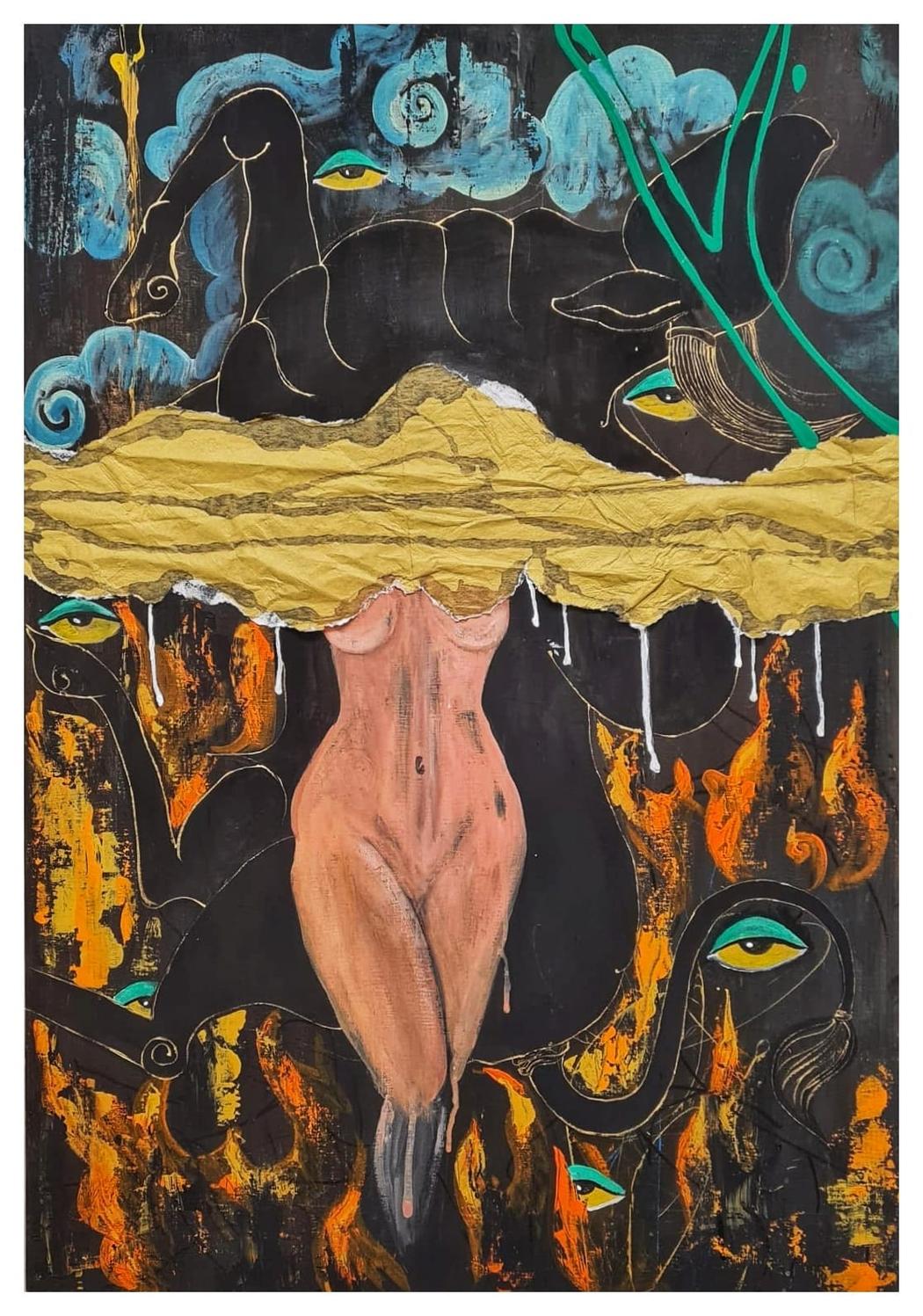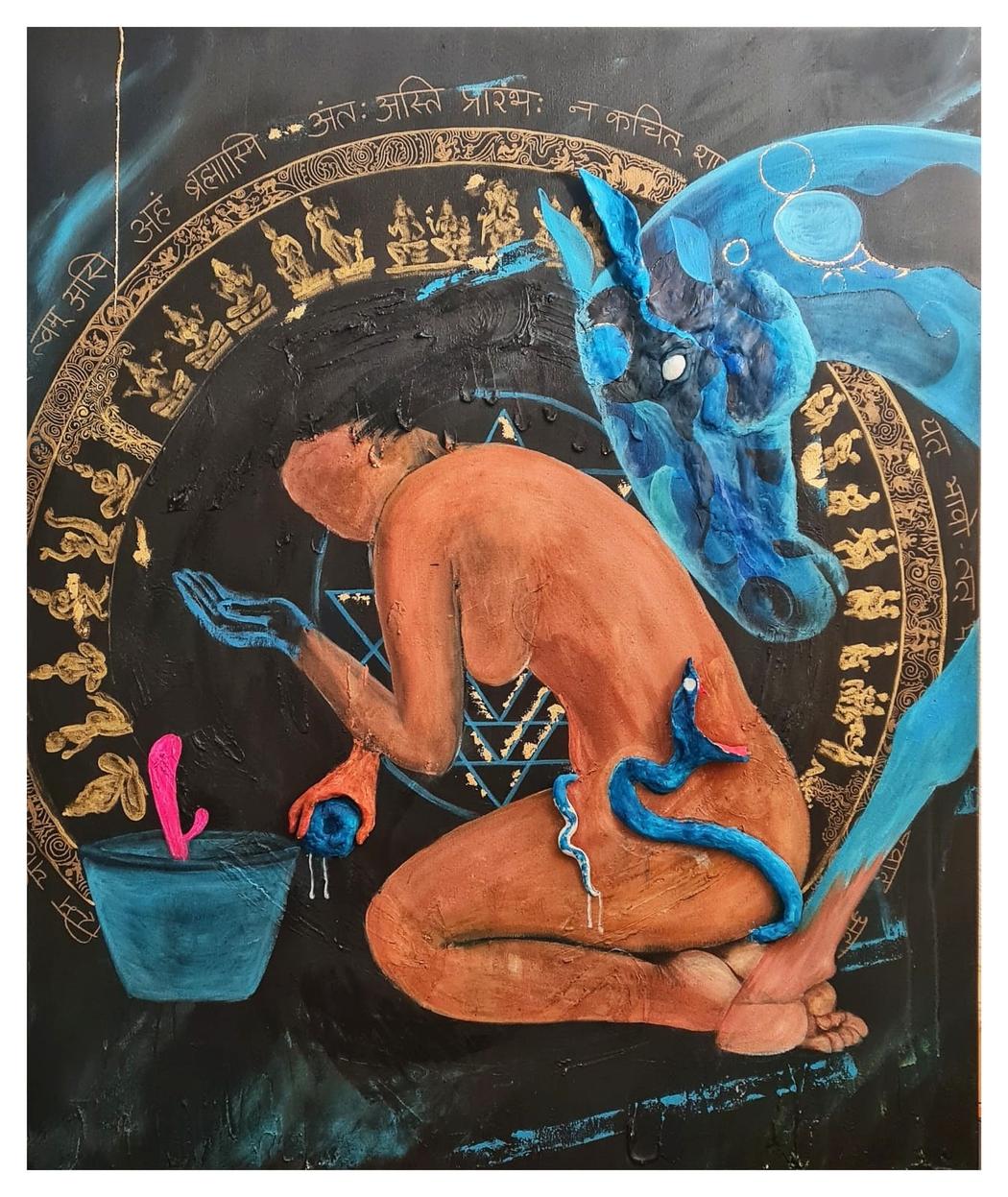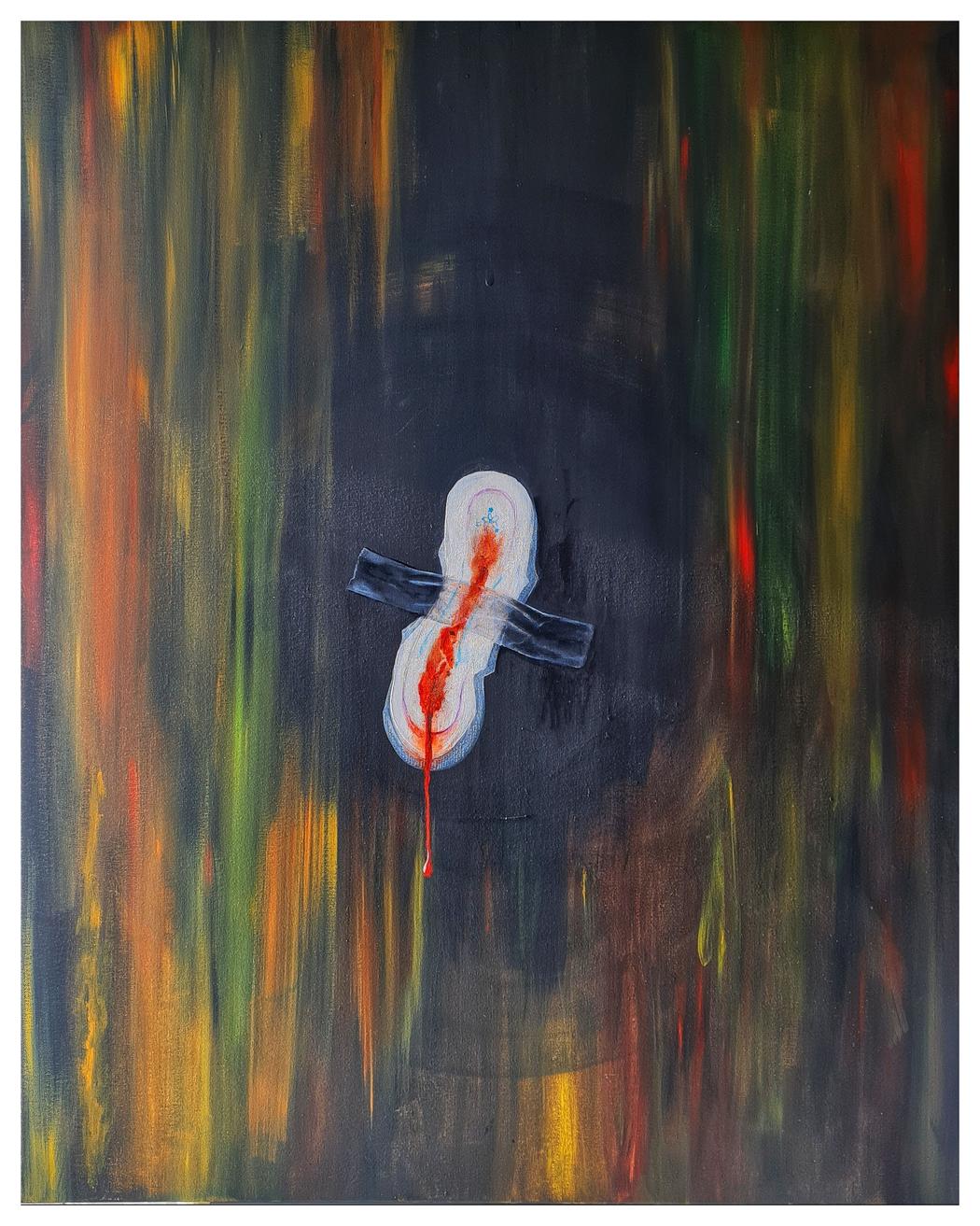Adarsha Ajay
Where do you live: From Kerala, India, now living in Bournemouth, UK
Your education: Master’s in Painting (MA Painting) from Arts University Bournemouth; Bachelor of Physics (BSc Physics); Bachelor of Education (BEd Physical Science)
Describe your art in three words: Healing, Empowering, Sacred
Website | Instagram
 Adarsha Ajay | She
Adarsha Ajay | She
Your work deeply explores themes of womanhood, trauma, and healing. How do you approach translating such personal and often painful experiences into visual art?
For me, art begins where language ends. I approach these themes by allowing myself to be fully vulnerable in the creative process. I don’t try to mask the pain, I sit with it, honor it, and let it guide me. My work is not about illustrating trauma but transforming it. I use symbolism, sacred patterns, and textures that hold emotional weight. Each painting is both a wound and a prayer, a way to reclaim the narrative and turn suffering into strength. Through this process, I create not only for myself but for others who need to feel seen and understood.
Many of your paintings blend sacred Indian iconography with elements from Christian spirituality. How do these dual influences shape your artistic vision?
These dual spiritual influences are a reflection of my lived experience. I was raised around Hindu rituals, yet deeply drawn to the compassion and silence of Christian imagery. Rather than choosing one over the other, I let both coexist in my work, not in a religious sense, but in a spiritual and symbolic one. They allow me to explore themes of faith, surrender, rebirth, and the feminine divine from multiple cultural lenses. This blending of iconographies mirrors my identity: layered, complex, and continuously evolving.
You often use female figures as central symbols in your work. How do you see the role of the ‘feminine divine’ in your artistic narrative?
The feminine divine is the soul of my work. I see her not just as a symbol, but as a presence, a force that carries both pain and power. The women I paint are not passive figures; they are warriors, mothers, survivors, and healers. They rise from silence, embody resilience, and carry sacred wisdom. The feminine divine is how I channel my own journey of endurance and transformation. Through these figures, I honor women who have been broken and rebuilt themselves, including myself.
What role does ritual or spirituality play in your creative process? Do you follow any specific practices while creating your pieces?
During the darkest chapters of my life, it was prayer and meditation that held me when nothing else could. That quiet surrender became my survival, and now, it is the soul of my practice.
Before I begin painting, I create a quiet, intentional space, sometimes I light incense, sometimes I sit in silence, meditate or listen to calm music. My room becomes a sanctuary, not bound by any one religion, but filled with presence and purpose. I approach the canvas as if I’m stepping into a sacred space, where I can speak honestly without fear, without shame.
The act of painting itself becomes a ritual. It’s a form of meditation where I lose and find myself at once. Through this process, I connect with something beyond the material, a divine source of strength that allows me to transform pain into beauty, and silence into voice.
 Adarsha Ajay | Desire & Divinity
Adarsha Ajay | Desire & Divinity
Your use of mixed media and symbolism is striking. Can you talk about your choice of materials and how texture contributes to your storytelling?
My materials often choose me before I choose them. I’m drawn to what carries memory, what has lived a life of its own. Texture, for me, is not just a surface detail; it is an emotional language. I want my paintings to be felt as much as seen.
During my course, I remember using a beach mat as my canvas, something humble, overlooked, and deeply textured. That choice surprised many, but for me, it made perfect sense. The mat held the imprint of footsteps, of sun and sand of ordinary life, worn and resilient. That’s what I look for in materials: history, fragility, strength.
I work intuitively with gold leaf, logs, fabric, thread, earth-toned pigments, each chosen for the story it helps tell. I layer, stitch, crack, and scrape to echo emotional complexity. The surfaces I create often resemble skin: marked, layered, vulnerable. These tactile elements speak to what lies beneath grief, memory, resilience.
Every material I use is part of the narrative. Nothing is ornamental. Everything is intentional. It’s through these textures that my work becomes not just a visual experience, but a visceral one inviting the viewer to lean in, to feel, to remember.
How did relocating from India to the UK influence your work and your freedom of expression as an artist?
Relocating to the UK has been a wonderful and inspiring chapter in my life. It has given me the freedom and space to explore my artistic voice more openly and deeply than ever before. Here, I’ve found a supportive environment that encourages experimentation and boldness, allowing me to express themes that were once difficult to share. After coming to the UK, I realized my true talent and have been gaining the confidence and strength to fully commit to this field. Being here has also helped me embrace and celebrate my cultural roots in new ways, enriching my work with a beautiful fusion of East and West. This experience has strengthened my commitment to creating art that bridges cultures, fosters understanding, and sparks healing. I am excited to continue growing as an artist here and to contribute meaningfully to this society by sharing stories of resilience, transformation, and hope through my work. I hold a strong hope that through my art, I will be able to make a positive impact on the world, especially for women, by giving voice to their stories and empowering them through visual expression.
 Adarsha Ajay | Censored
Adarsha Ajay | Censored
There’s a visceral honesty in your paintings. Do you see your work as a form of therapy or resistance—or perhaps both?
For me, it’s absolutely both. Art is my therapy, it’s how I survived. But it’s also my form of resistance , against silence, against shame, against the erasure of women’s voices. When I paint, I’m healing myself, but I’m also challenging the narratives that kept me small for so long. Every brushstroke is a declaration: I exist, I remember, and I transform. Through art, I reclaim my story and create space for others to do the same.

Haripriya
I exist, I remember, and I transform. Through art
A true artist words . I know adharsha and her worlds , very talented artist .